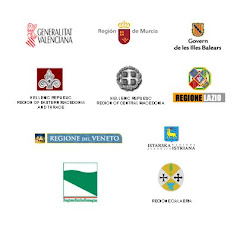
Bathing water quality improving
The annual bathing water report was presented the 11th June by the European Commission and the European Environment Agency reveals that the large majority of bathing sites across the European Union met EU hygiene standards in 2008. During that bathing season some 96% of coastal bathing areas and 92% of bathing sites in rivers and lakes complied with minimum standards. The report provides useful water quality information for the millions of people who visit Europe's beaches every summer.
Bathing water quality shows a long-term upward trend
Every summer millions of Europeans head for the beach to enjoy the sun and to cool down in refreshing clean water. To allow Europeans to make an informed choice on which beach to choose, the Commission publishes a yearly report on the quality of coastal and freshwater bathing areas as reported by Member States for the beaches located within their territory. This year the report was prepared by the European Environment Agency (EEA), which is also making available on its website maps and tables with detailed information on specific bathing areas.
In 2008 the number of bathing waters monitored increased by some 75 sites. Of the 21,400 bathing areas monitored throughout the European Union in 2008 two thirds were on the coast and the rest were along rivers and lakes. The largest number of coastal bathing waters can be found in Italy, Greece, France, Spain and Denmark while Germany and France have the highest number of inland bathing waters .
The overall quality of bathing waters in the EU has markedly improved since 1990. Compliance with mandatory values ( minimum quality requirements) increased over the 1990 to 2008 period from 80% to 96% and from 52% to 92% in coastal and inland waters respectively. From 2007 to 2008 compliance increased both for inland and coastal waters (1.1 and 3.3 percentage points respectively).
Twelve Member States monitoring under the new bathing directive
Bathing areas are zones where bathing is explicitly authorised or where bathing is traditionally practised by a large number of bathers and is not prohibited.
To determine their quality bathing waters are tested against a number of physical, chemical and microbiological parameters for which the Bathing Water Directive
1 sets out mandatory values. Member States must comply with the mandatory values but may adopt the stricter standards and non-binding guide values .To determine their quality bathing waters are tested against a number of physical, chemical and microbiological parameters for which the Bathing Water Directive
In 2006 a new bathing water directive
The report
A summary of the report and detailed country reports are available in English on the Commission’s bathing water website at:
http://ec.europa.eu/environment/water/water-bathing/report_2009.html Zoomable maps of all European bathing areas can be viewed on the EEA website :







1 comment:
Guess who spends his summer in that beach :)
Post a Comment